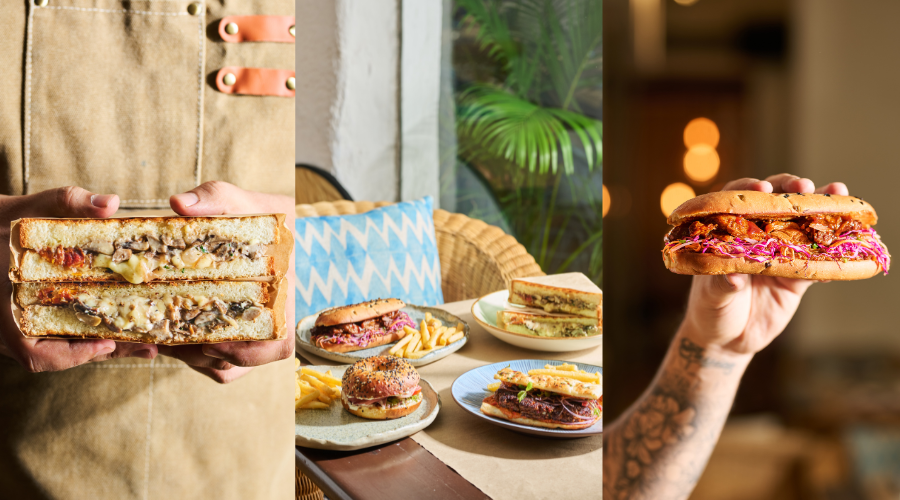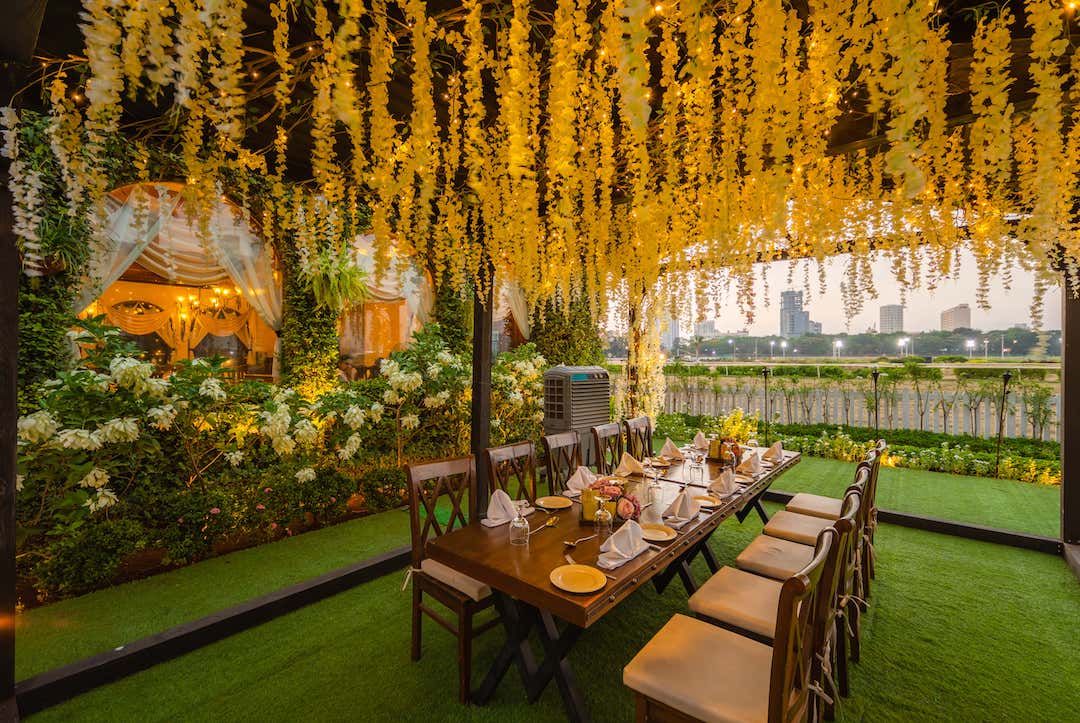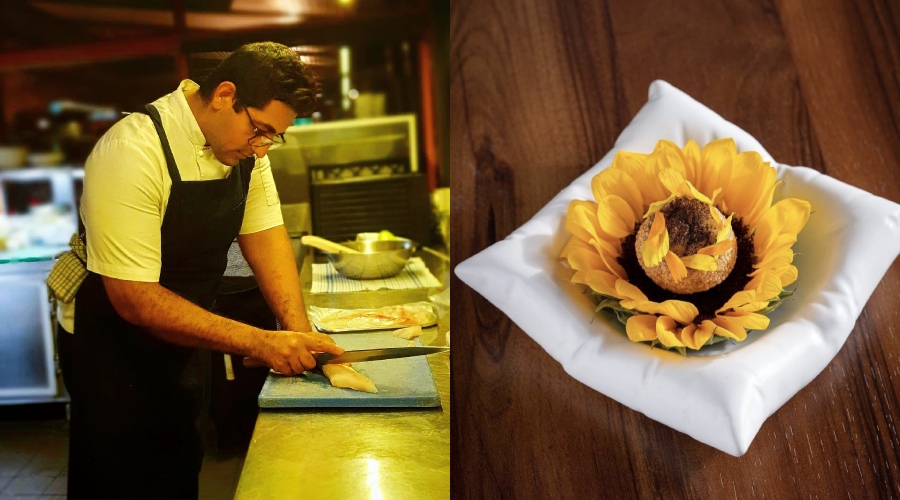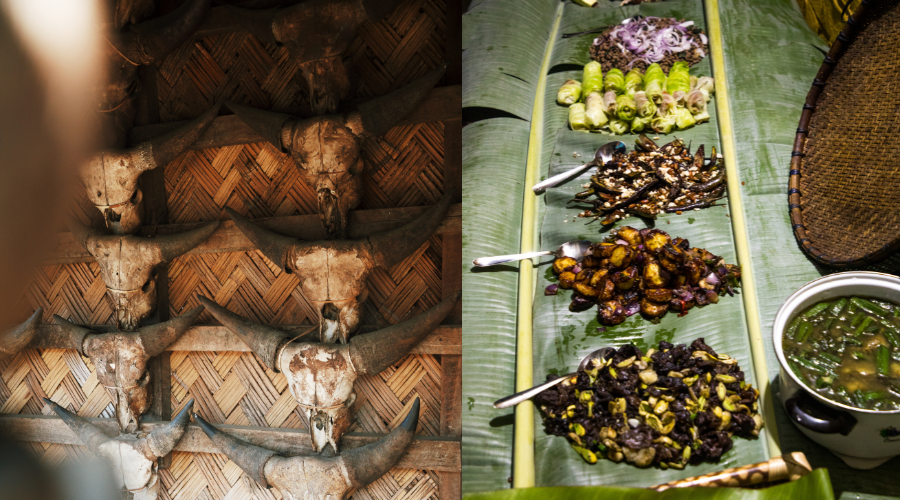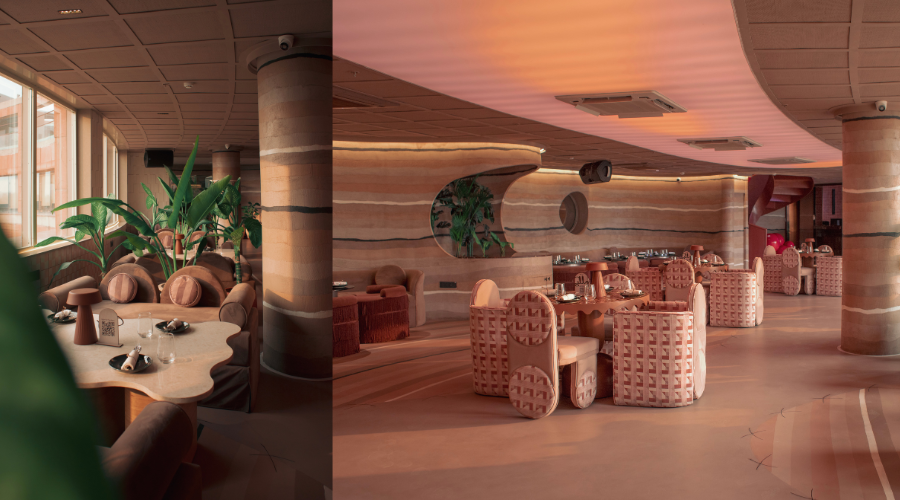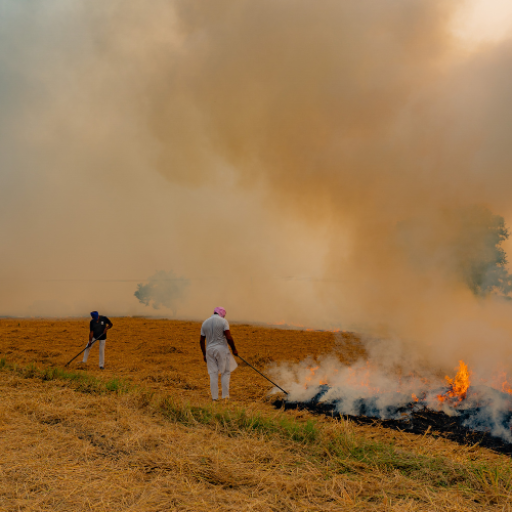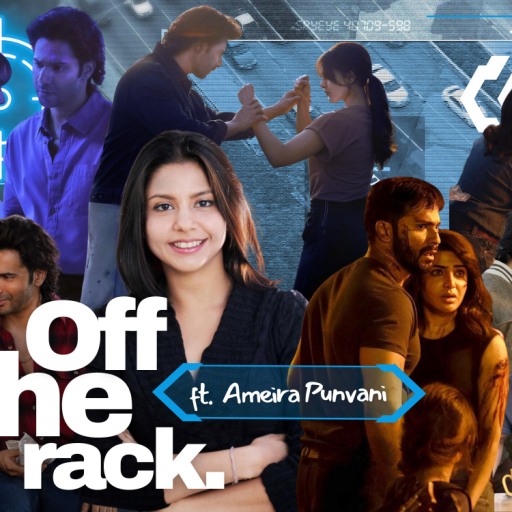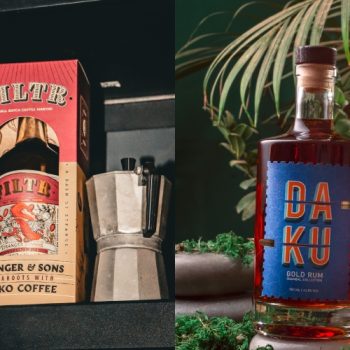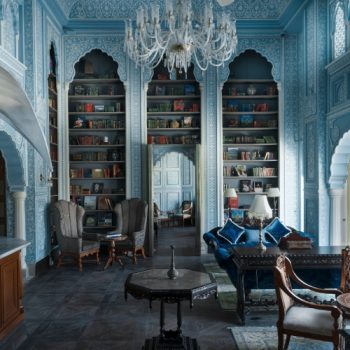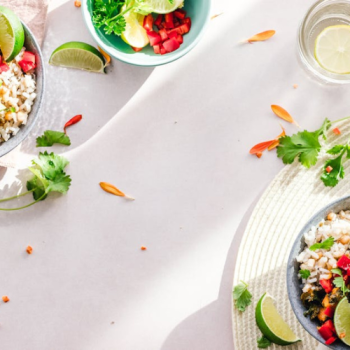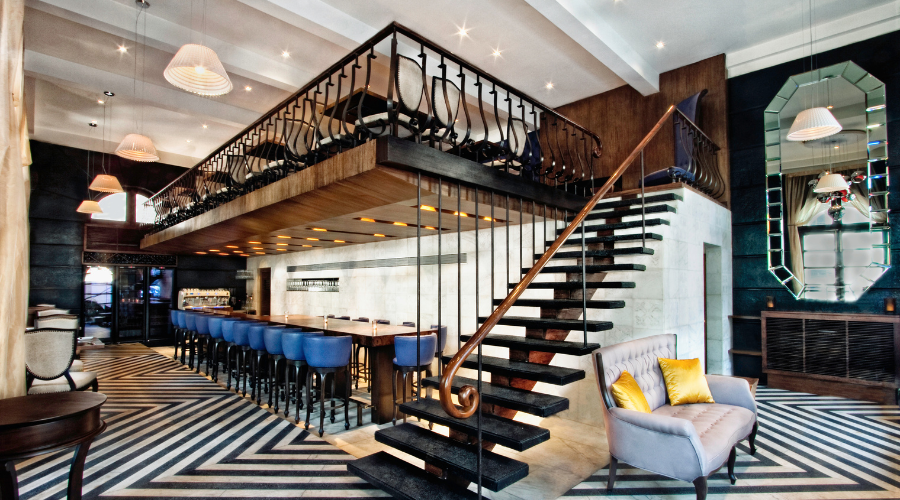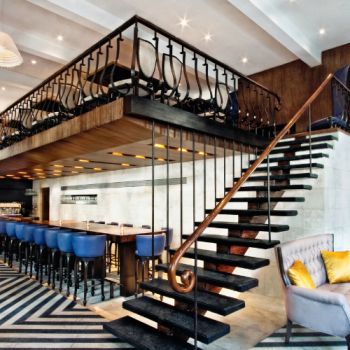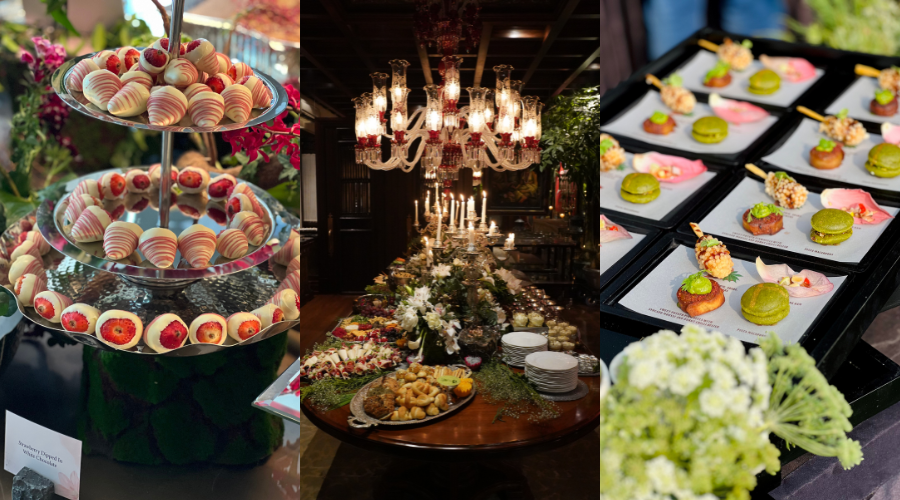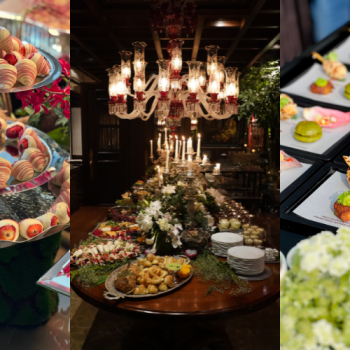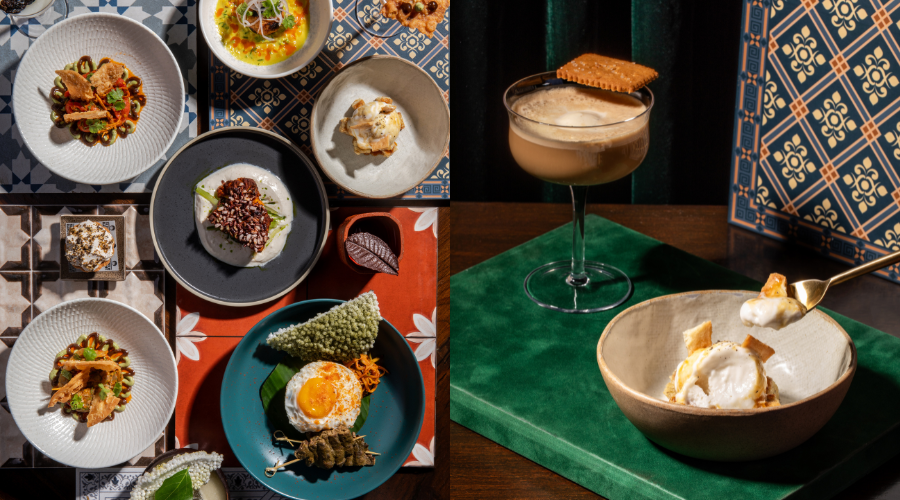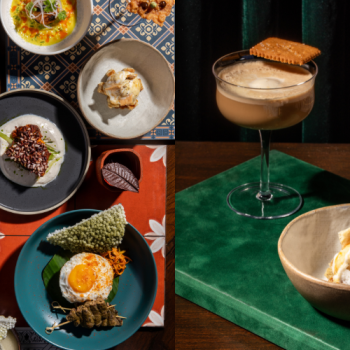For the longest time, my palate has been accustomed to the taste of international and mass-produced chocolate brands. I’ll admit, it’s been a little difficult for me to open up to the taste of Indian craft chocolate, though it is currently having a moment. But not many have cracked the code of intersecting familiar Indian tastes with novel global preferences until now. Chaitanya Muppala–CEO of the well-known Hyderabad-based sweets and savoury shop, Almond House and India’s first and only Level 3 Certified Chocolate Taster–made this distinct observation and sought to bridge the gap with the launch of a new craft chocolate label, Manam. What starts from a sweet and juicy Indian cacao fruit transforms into a fine-flavoured cacao bean with endless possibilities.
When I got a call to not only visit Manam Chocolate Karkhana in Hyderabad but also get a chance to deep dive into its behind-the-scenes, I was intrigued to know how the chocolate would turn out to be. My curiosity finds me on a flight to Vijayawada, and from there, I embark on a journey to a cacao farm in India’s largest cacao-growing region in West Godavari, Andhra Pradesh.

Where The Seeds Are Sown
Working with over 100 farmers, Chaitanya is on a mission to build India as a fine-flavoured cacao destination, specifically the West Godavari region. “Generally, cacao beans are brought and then processed. But we start with the fruit as we want control over it and its flavours,” he shares as we walk through farmer GVS Prasad’s farm, where I see large yellow fruits hanging from the cacao trees. The colour of the pod changes from red to green to purple and eventually yellow which denotes they are ready for harvest.
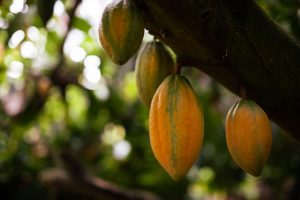
Prasad shakes the fruit close to his ear to check for movement of loose seeds (a test that tells him whether it is ripe for the picking) and hits it against the tree bark to crack it open. I see a beautiful cluster of cacao seeds that can be consumed in its raw form. Along the way, I taste a variety of cacao seeds that are a mix of sweet and sour (similar to mangoes) with a hint of tannin notes towards the end.
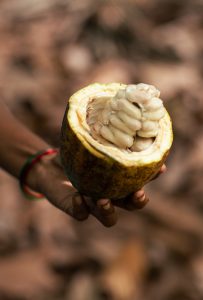
The women on the farm are usually responsible for plucking the fruits from the trees with a long pruning hook. That day, we had the chance to partake in this process. I now understand how tedious it is as I try my hand at plucking some fruits, which are then collected and taken to the fermentery.
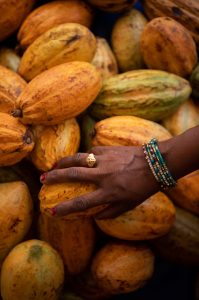
Chaitanya also tells us that the journey of the cacao is something that can be tracked through a blockchain-enabled system. “Our 100+ farmers are registered on the portal. So we know how many acres they farm, how much we procure from them in a year, how much we pay them, what their average yield is, where their farm is and what their primary crop is. All this data is accessible,” he says. He further explains that this data helps them to get a certain flavour profile from a farm to understand the farming practices, other crops that are being farmed on that land and how that affects the flavour.
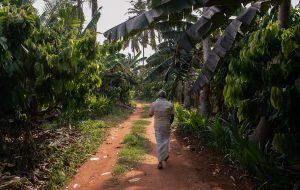
Unlocking Cacao’s True Potentials
After bingeing on some cacao seeds and enjoying Pesarattu dosa under coconut and palm trees, we head to the place where the potential of Indian cacao is tapped into. The pods collected from the cacao farm are taken to the Distinct Origins Cacao Fermentery, which Muppala set up in 2021 to ensure cacao beans go through the correct process of fermentation and drying–two crucial methods that are responsible for bringing out the true flavour of cacao. Although India has been growing chocolate since the 1960s, it is not seen as a fine-flavoured cacao-growing region. This is because conventional farmers have been carrying out fermentation and drying methods for the beans in rather rudimentary ways, which affect the overall flavour of the chocolate and throw off its balance, according to Chaitanya. To combat this, he decided to take complete control of both steps with the set up of his Cacao Fermentery in Tadikalapudi, West Godavari – the largest of its kind in India, and estimated to be the second largest in the world.
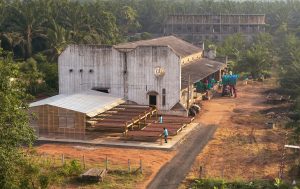
Once we reach there, I see women breaking the cacao pods with wooden clubs and separating the seeds by hand in order to prevent damaging the seeds. Once that’s done, the seeds are sent for fermentation and drying. The discarded husks are converted to vermicompost and given back to the farmers to help replenish their native soil’s nutrients, ensuring no wastage.
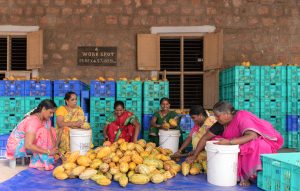
The fermentation is carried out in a box-type step fermentation process where the beans and their sweet pulp are placed in wooden boxes, lined with banana leaves and covered with jute bags to maintain temperature and moisture levels. “The International Standards for Indian cacao states that 60% of fermented beans is good enough. But we aim for 90-95% fermentation,” Chaitanya tells us.

Once fermented, the beans are dried for 7-15 days (an equally important step that is often overlooked by conventional farmers), sorted and packed in jute gunny sacks, which are then sent to the Karkhana in Hyderabad.

Where The Magic Unfolds
The next day, we visit the space where the endless confections of chocolate come to life. In the bustling area of Banjara Hills stands Manam Chocolate Karkhana. Featuring a large Manam chocolate tablet-inspired wooden door, the aroma of the chocolate outside lures you indoors. Step inside a chocolate lover’s paradise that graces you with a chocolate fountain wall, something I was tempted to dip my finger in, and an expansive range spanning over 250 products in signature chocolate tablets, snacking, indulgence and bakers collections–all made by Head Chef Ruby Islam and her team. But before exploring the elaborate retail selections, we get a tour of how the beans are processed post-drying, which you can also witness yourself if you drop by for a visit.
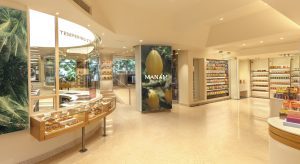
Chaitanya takes us through a live chocolate-making process where we see the magical transformation of raw cacao beans into luscious chocolate as it goes through necessary industrial processes of cracking, winnowing, grinding, refining, conching, tempering, and moulding.
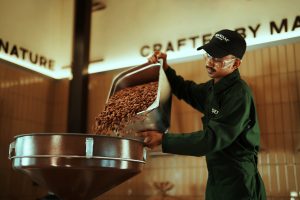
Following the short chocolate tour, we continue to explore the store that houses everything from dark chocolate tablets, bonbons, truffles, barks, fudge, rochers, clusters, macarons to spreads, cakes and pastries, hot and cold beverages, a range of ingredients for bakers, and much more. I feel like I’m Willy Wonka in a chocolate factory as I go and take a bite of all that catches my eye.

My favourites include the Candied Orange Wheel, Coconut & Curry Leaf Bonbons and The Chocolate Maker’s Single Farm Series which is made with cacao from select partner farms in West Godavari. It pays tribute to the farmers’ dedication and craftsmanship that lends the cacao its unique identity and bold flavours. For instance, the Manam Farm Tablet No. 3 is 68% dark chocolate made with cacao farmed by Mr GVS Prasad. What sticks with me the most is how each tablet in the signature tablet collection comes with a barcode that on scanning, shows you the entire journey of how the chocolate is made–right from the source of cacao, to its production. Keeping it transparent, Manam wants you to know where your chocolate comes from.
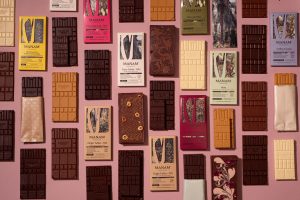
What’s more? An interactive screen allows you to watch the journey of Indian Cacao right from harvesting to bagging of the beans; a chocolate lab lets you get creative and make your own personalised chocolate tablets by embellishing them with toppings such as Kashmiri Walnuts or Freeze-dried Strawberries. I opted for the 60% dark chocolate with caramelised white feuillantines and almond batons, a creation I am very happy with. If you choose to become a master chocolate taster, enrol yourself in Manam Classroom’s knowledge programs and workshops where you can educate yourself, engage with other chocolate enthusiasts, have inspired tastings, and enjoy more nuanced experiences with chocolate.
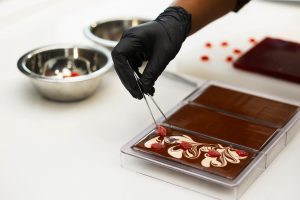
Beyond Chocolate
Once you’re done playing Willy Wonka, you can sit back, relax and enjoy a range of coffees, confectionaries and savoury meals at the gorgeous Manam Cafe. Its interiors are inspired by a cacao plantation which is reflected by the Theobroma cacao tree placed right in the middle with surrounding greenery. From a Cold Drip Cacao Nitro made by steeping coffee through Single Origin Cacao to Caramelized White Chocolate Mocha, the coffee menu features comforting drinks made from two craft crops. But if you want to take a break from all the sweetness, the savoury menu includes wholesome meals that are sure to evoke nostalgia. My favourite picks are the Millet Tacos, Kheema Bunny Chow, Prawn and Mango Curry, and Chicken Liver on Toast.
Chocolate has always been an experience of indulgence, one that uplifts your mood. But when it is backed by an interesting story, an intriguing journey and insight about who is involved in its making, every bite feels luxurious. And that’s what Manam brings to the table. Meaning ‘We’ or ‘Us’ in Telugu, Manam is a collective of passionate craftspeople–farmers, fermenters, chocolate makers, chocolatiers, and storytellers–who come together to unveil a new era of Indian Craft Chocolate™, one that sees a pod-to-bar experience coming to life.
On my way out, I can’t help but grab a gelato stick (another confectionary available at the Karkhana), dip it into the liquid dark chocolate flowing from the tap and decorate it with crunchy toppings. I leave with yet another delightful bite and a newfound love for Indian craft chocolate.

